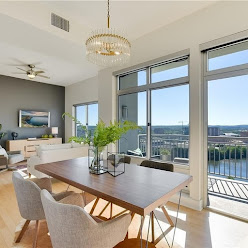6 Principles in an Interior Design Formation
Interior space is decided with relevancy and making the perfect combination of things.
The best Austin interior designer will make the design for you based on certain principles.
Balance
It is the distribution of equal weight in the room. It can be in varied forms like symmetrical, asymmetrical, and radial.
Symmetrical balance: A form which is characterized by the same type of objects repeated on either side of a thing like a bed. The same type of furniture can be placed on both sides of the bed. It has a balance on equal sides.
Asymmetrical balance: It can be more appropriate with some dissimilar objects that have equal weight or eye attraction. Asymmetrical balance is a casual way and the feel is not achieved in that with the use of items and also is difficult to make.
Radial balance: In this, a central part is focused and the design goes around the base. A center table with chairs on its side can be an example of a radial balance. It can be a useful built for the house.
Focal Point
There should be one or more focal points in the room to know the function of the room and the work aesthetics of the room. It should draw the attention of the viewer and should be an integrated part of the room. An interior decor portfolio in Texas can put a lasting impression and should be required for the room to look functional. If there is no natural focal point, you can make one with shifting furniture and highlighting your functional choice at a place.
Rhythm
A repetition is followed for the themes and colors for example. For continuity and to achieve this, you can collaborate with repetition, progression, transition, and contrast.
Repetition can be the use of the same element throughout a space. A pattern, color, texture, or any other element can be repeated.
Progression can be understood as decreasing or increasing the qualities of an element. It can be done with the size. A progression pattern is effective for catching the eyes of an individual. It can also be done with the same color but with different shades and hues.
Transition is making a design that is interactive at each step like the pattern you see when you move from one room to another. It can be used as an arched doorway or a window leading to another room or that can be seen with the color pattern.
Contrast is putting two elements in opposition to one another comes. such as the use of color like red and blue on the walls, black and white pillows on a sofa, or a hanging plant pot in red and white. There can be a form with circles and squares such as on windows to contrast the design. There should not be too much contrast that you can not identify and look at other things.
A detailing should be followed so that the design can be embraced with the needs and requirements of an individual and the improvements to be done.
Scale and Proportion – You have to use things in a proportion that everything should look fine and there should not be any excess of anything. The same is with scaling that a perfect size should be there in a specific length so that the things do not cover more space.
Color – The colors should be selected as per the decoration that can give new strength to your walls. An occupied home staging Austin can be more detailed and it affects our mood. The colors are a part of the themes and the way we can texture things by matching the colors. The colors can be useful in selecting items that can suit our eyes.

Comments
Post a Comment